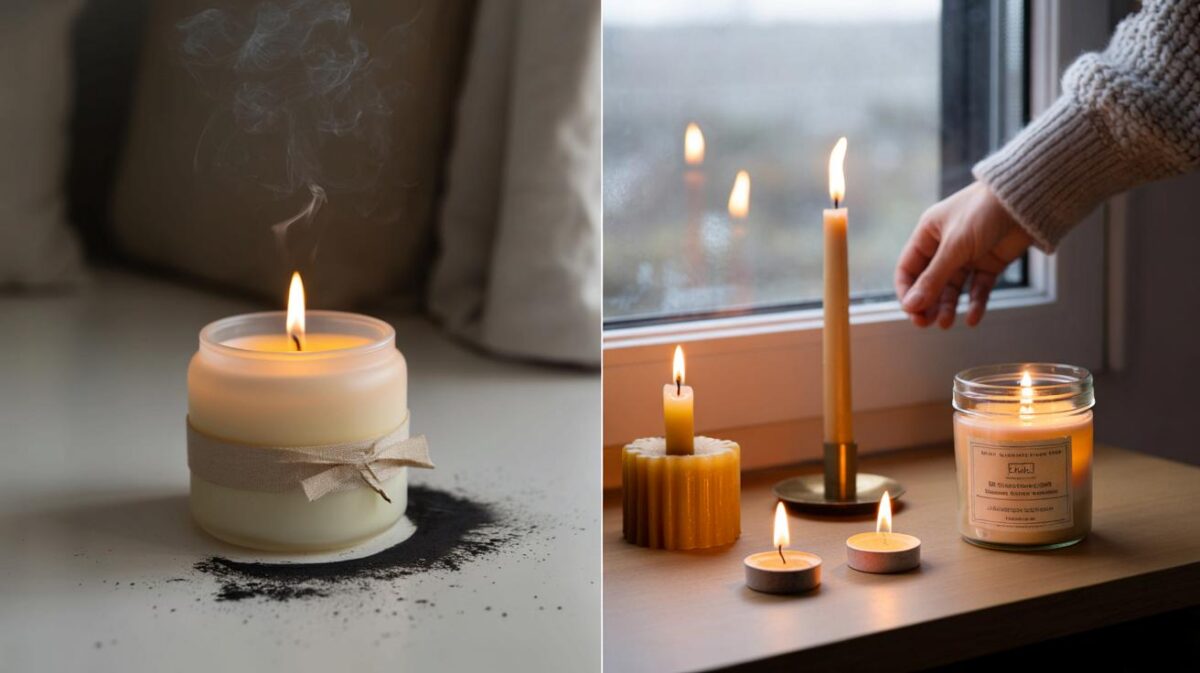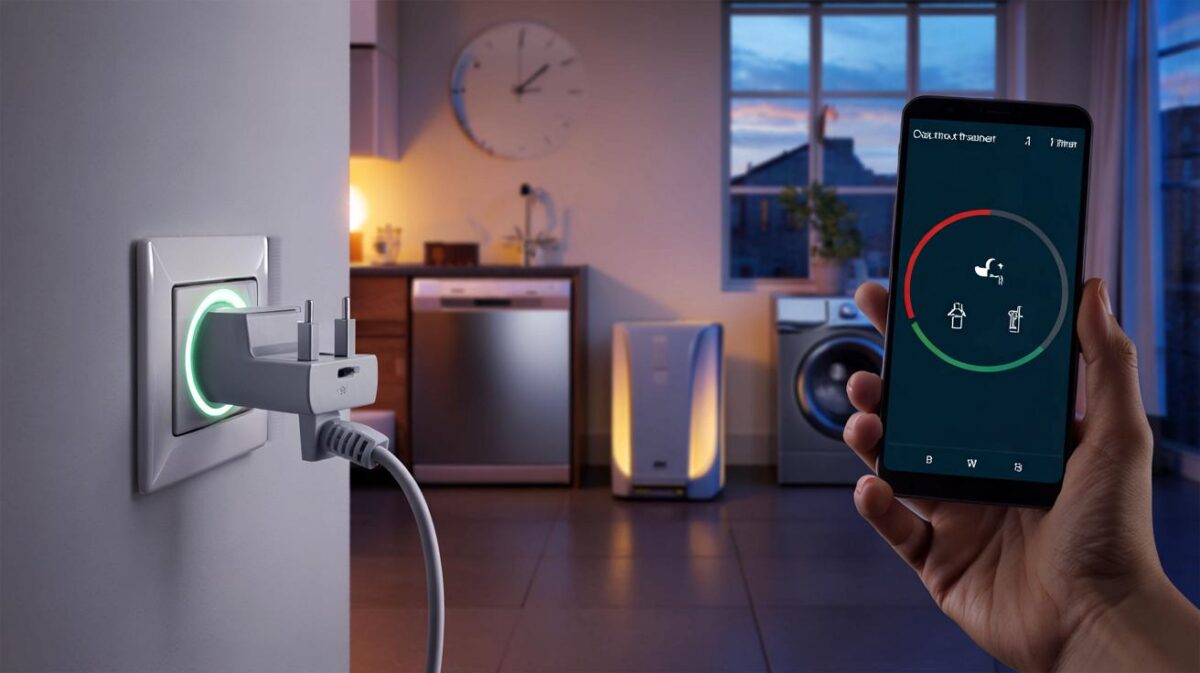It isn’t your tariff, your thermostat, or your bricks. It’s where your radiator sits — and what you’ve put in front of it. The fix doesn’t need a plumber. It needs a tape measure, a shuffle of furniture, and two minutes of attention.
Six o’clock. The rain has turned the street a glistening grey, the traffic a low hiss outside. In the lounge, the radiator ticks to life, paint faintly warm to the touch, yet your toes stay cold and the air never quite loses that thin, damp edge. You notch the thermostat up, again. The sofa is snug against the wall, the curtains drape luxuriously past the sill, and a laundry rack leans by the heat. Then you nudge the sofa forward a hand’s span and hook the curtains clear of the convector top. The change is not dramatic. It’s unmistakable. The radiator wasn’t the problem.
The hidden culprit stealing your heat
Radiators don’t just radiate. They move air. The cool air at floor level flows through the fins, warms, and rises in a soft column that spills into the room. Block that pathway and you strangle the very circulation that makes a radiator work. *Heat hates obstacles.*
We’ve all had that moment when the room feels inexplicably chilly, so we blame the weather or the boiler. Then you notice the huge sofa pressing against the radiator, or heavy curtains pooling over the top, and it clicks. That’s not cosy styling. That’s a heat trap.
In a terrace in Leeds, I watched a family slide their sofa 12 cm forward and lift curtains so the hem sat level with the sill. A cheap digital thermometer logged a 1.7°C gain at sitting height within 45 minutes. Gas use didn’t spike. The warmth just started reaching people rather than glazing the window and warming the back of a settee. It felt like a small magic trick, because it was just physics doing its job.
Here’s the logic. A radiator works by establishing a loop: cool air in at the bottom, warm air out at the top, then across the room before sinking and returning. Press a sofa against it and you make a pocket of hot air behind the fabric, which then creeps up the wall and dumps heat into plaster. Let a curtain drape across the top and you channel warmth straight onto the glass, where it’s lost. Add a deep window sill and the flow peters out entirely. The radiator isn’t weak. The airflow is.
Fix it fast: small moves, big warmth
Start with the “15 cm rule”. Give any radiator a hand’s span of open space in front and a few centimetres clear above. Pull the sofa forward, shift the sideboard, and unhook curtain hems so they sit just above the sill rather than swaddling the convector. A simple shelf perched 10–15 cm above the top edge will bounce warm air into the room and stop it clinging to the glass.
If it’s on an outside wall, add reflective foil behind the radiator to cut losses into brick. Clear dust from fins with a soft brush — grime behaves like a sweater. Bleed cold spots until the top edge is hot from end to end. Let’s be honest: nobody actually does that every day. Do it once as the weather turns and you’ll feel the difference.
Radiator covers can work, but only if they’re vented top and bottom and not jammed with knick-knacks. The same goes for drying racks and towels. They’re tempting, they’re handy, and they turn a radiator into a lukewarm wardrobe. **Free the fins.** The heat is already paid for; the trick is letting it reach you.
“Nine times out of ten, I don’t touch the boiler,” says Tom Ward, a Gas Safe heating engineer from Nottingham. “I move furniture and curtains. Customers think I’m daft, then they feel the room half an hour later and ask what sorcery I’ve done.”
- Move the sofa: keep 10–15 cm clear space in front of every radiator.
- Lift heavy curtains: hems at sill height, not over the convector top.
- Add a narrow shelf above the radiator to throw heat into the room.
- Use reflective foil on outside walls to reduce heat loss.
- Bleed and dust: warm top to bottom, fins free of fluff.
Where radiators belong — and what to change when you can’t
Classic advice puts radiators on outside walls under windows to cancel cold downdraughts. Double glazing has changed the game, yet that position still creates a useful convection loop. If yours sits on an internal wall, don’t panic. You can guide the airflow with that slim shelf, keep the path clear, and position seating where the warm current naturally flows, not where it stalls.
Older homes with deep sills and thick curtains are the worst offenders. Trim or tie the fabric so it doesn’t cap the radiator. Swap to lighter-lined curtains or blinds that stop above the sill. If the room is long and narrow, consider two smaller radiators facing each other rather than one oversized unit. They’ll set up gentler, overlapping currents that warm more evenly. **Think of heat like water: it needs a channel.**
Relocating a radiator is a bigger job, so treat it as phase two, not step one. Many “cold rooms” stop being cold when the airflow is unblocked. If you do move one, aim for the spot where people feel draughts or where you sit still the longest. **Heat the humans, not the plaster.** That’s the real brief. And yes, thermostatic radiator valves help, but only when the radiator can breathe; a valve can’t fix a smothered convector.
There’s a small satisfaction in moving a piece of furniture and feeling the room soften, as if the house exhales. It’s modest, almost private. Yet it spreads, because other rooms borrow the idea, then friends ask why your place feels warmer without the usual stuffiness. You don’t need to win an argument with your boiler. You need a kinder path for the warmth you already own.
| Key points | Detail | Reader Interest |
|---|---|---|
| Clear the airflow | Keep 10–15 cm in front and a few cm above every radiator | Actionable in minutes, no tools needed |
| Curtains and sills | Hems at sill height; add a small shelf to deflect heat | Style-friendly tweaks that feel warmer fast |
| Smart upgrades | Reflective foil on outside walls; bleed and dust fins | Cheap wins before calling a heating engineer |
FAQ :
- Should radiators always go under windows?It still works well because it counteracts cold downdraughts and sets up a healthy circulation, but it’s not mandatory with modern glazing. Prioritise clear airflow and where people actually sit.
- Is a radiator cover a bad idea?Not automatically. Choose a design with generous top and bottom vents and avoid cluttering the surface. If warmth drops, the cover is suffocating the flow.
- Will moving my sofa really make a difference?Yes. Even a 10–15 cm gap stops heat pooling behind fabric and pushes warmth into the room. Many households feel a 1–2°C gain at seat height within an hour.
- What about reflective foil?Behind radiators on outside walls, foil reduces heat lost into brick. It’s inexpensive, quick to fit, and works best alongside clear airflow and decent curtains or blinds.
- My radiator is hot, but the room is cold. Why?Blocked airflow, heavy curtains, deep sills, or dust-choked fins often trap heat where you can’t feel it. Restore the convection path first, then look at balancing the system or upgrading valves.








